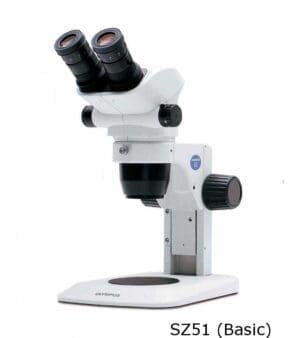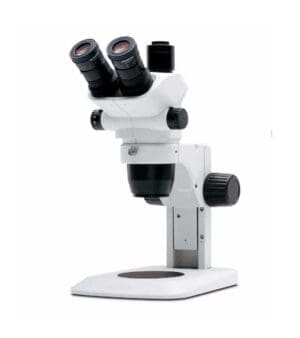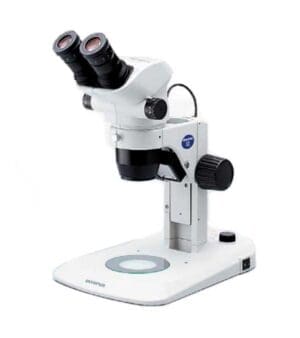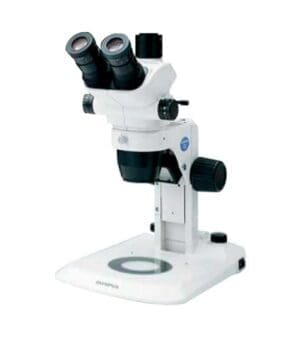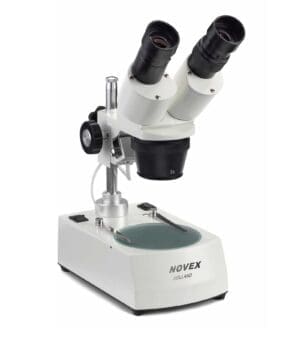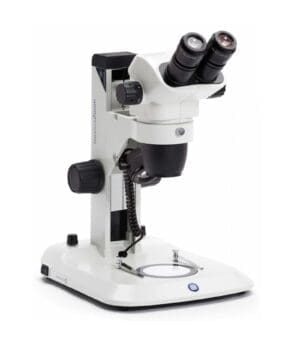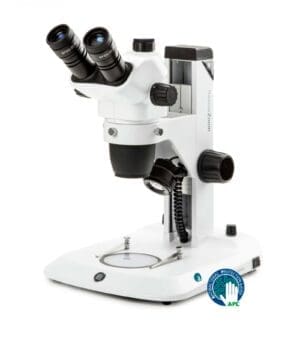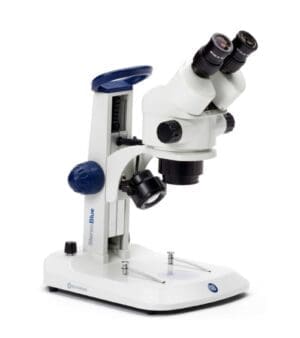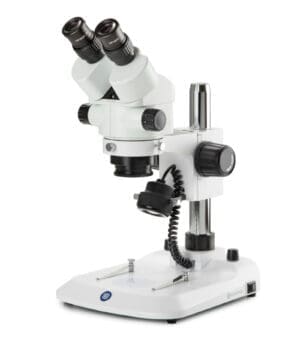Stereo microscopes (also known as dissecting or low power microscopes) are predominantly used for viewing macro material specimens that are opaque. These work especially well for most kinds of inspection and precision work like watch making, jewellery inspection and assembly, or even assist with manufacture of parts such as circuit boards. However, Stereo microscopes can also be configured for biological applications such as insect study and embryo inspection.
Therefore, stereo microscopes are adaptable for use in a wide range of applications. This is due to the balance of properties their optical configuration achieves. Their dual optical path, lower magnification, and longer working distance composition, allow increased depth of field and visualisation of three-dimensional samples.
We offer three different options of stereo microscope configuration.
Greenough Stereo: These come with either a fixed or adjustable magnification and consist of two optical paths, which provide a separate image for each eye.
Zoom Stereo: Microscopes with zoom or variable magnification to change the field of view. Ideal for viewing a variety of different sample sizes.
High Resolution Stereo: These come with common main objectives, and variable magnification.
An essential consideration of any stereo config is that the illumination type or light source be applicable to the sample.
As a rule of thumb, illumination selection in stereo microscope below.
Opaque materials: Use reflected light (also known as episcopic light) delivered obliquely by cold light sources with gooseneck (fibre optic) light guides, or mounted ring lights.
Transparent Bio samples: Use transmitted light (also known as diascopic light) delivered by an illuminator under a glass plate in the base of the stereo, to shine through the sample.
Fortunately, many standard stereo microscope configurations now come with both options included, making them increasingly multipurpose. It is also possible to add other more specific illumination techniques such as fluorescence, polarisation and dark field, to optimise visualisation of applicable samples.
Whether you’re in research, education, or industry, we have a suitable stereo microscope to fit your needs. No matter your price point or level of expertise, Best Scientific can ensure your stereo microscope configuration is optimised for your area of study. Speak to us about your requirements and receive expert advice about what device is right for you and your organisation.
